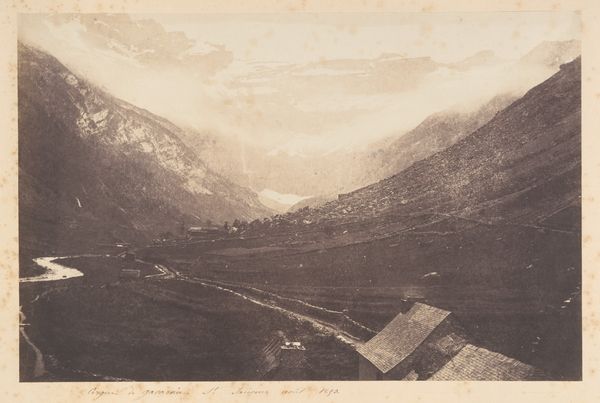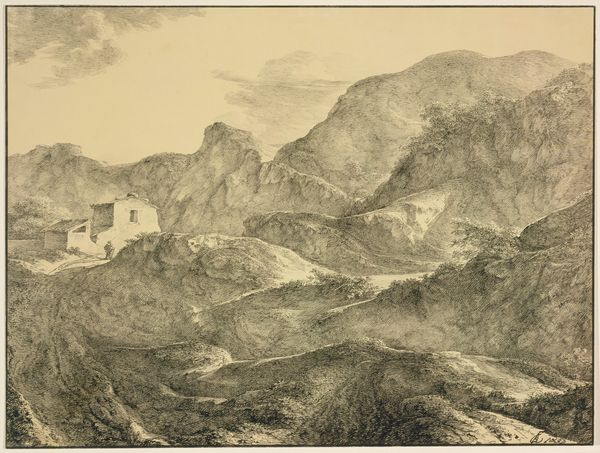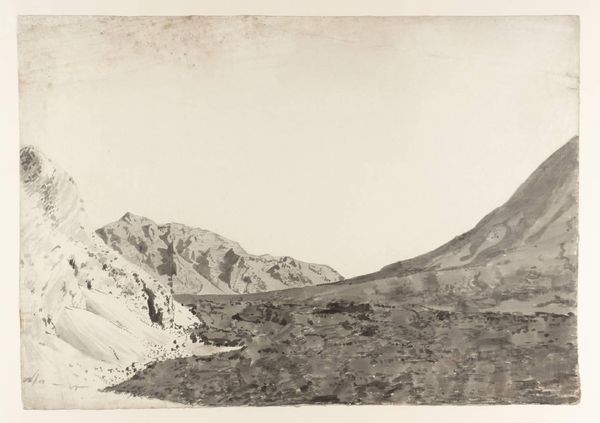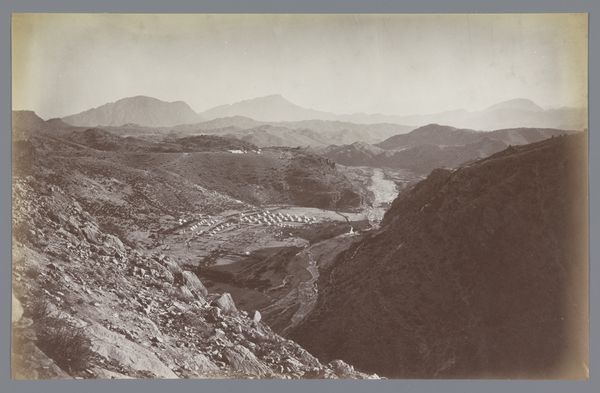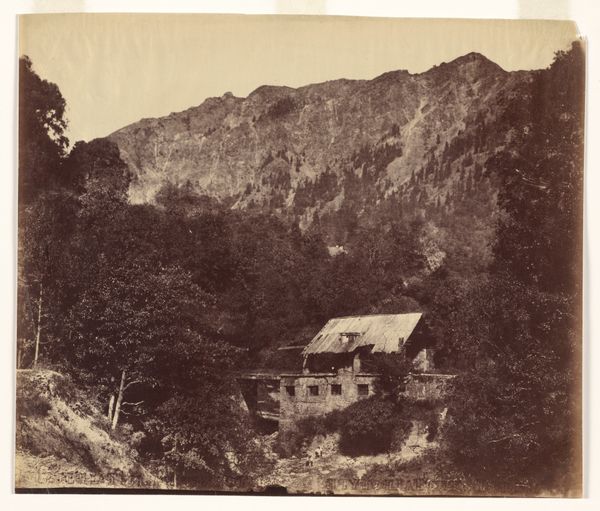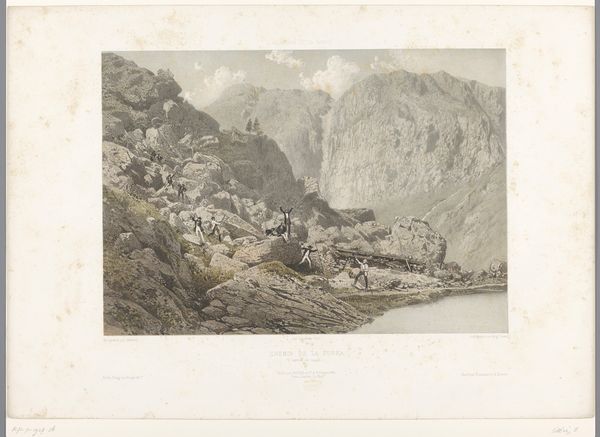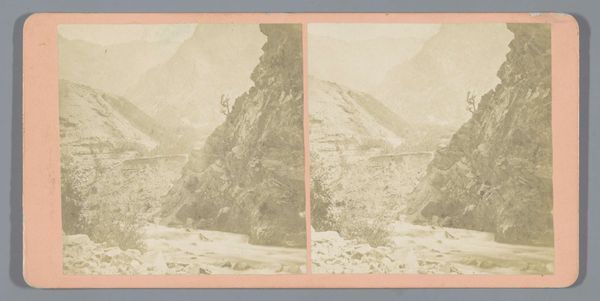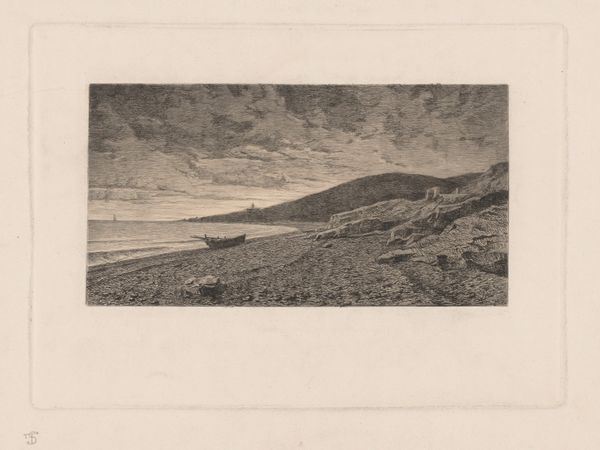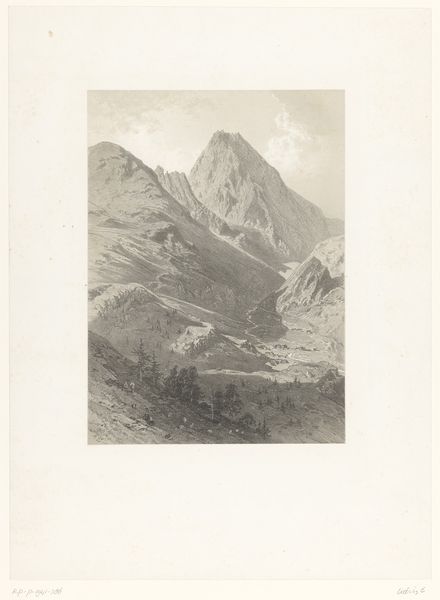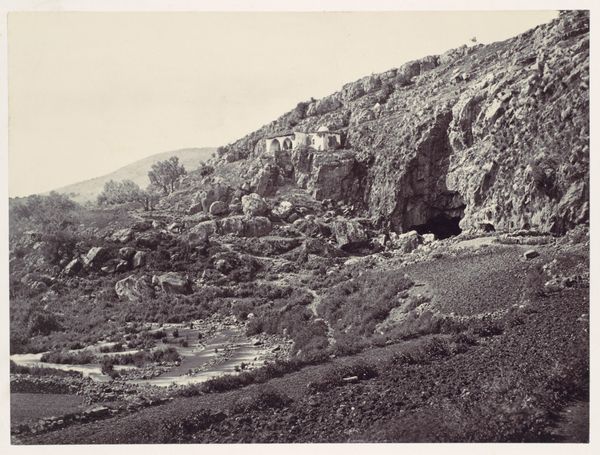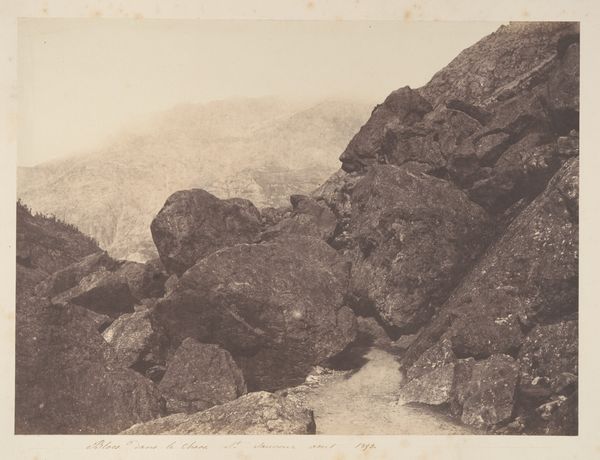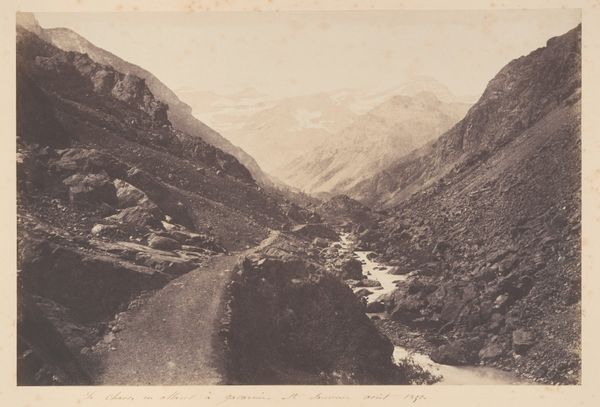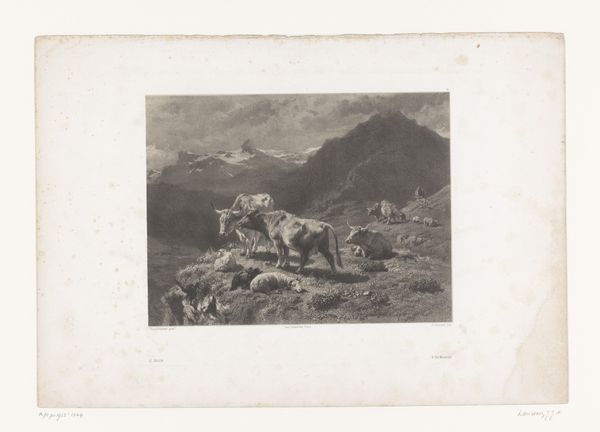
Vue de la Vallée de Luchon prise de la tour de Castelvieilh 1853
0:00
0:00
Dimensions: Image: 9 5/8 × 14 5/16 in. (24.5 × 36.4 cm) Sheet: 12 in. × 18 9/16 in. (30.5 × 47.2 cm)
Copyright: Public Domain
Editor: Joseph Vigier's "Vue de la Vallée de Luchon prise de la tour de Castelvieilh," a gelatin silver print from 1853, really captures a sense of dramatic isolation. The lone tower perched atop the hill gives the entire valley a sense of almost romantic melancholy. What stands out to you in this piece? Curator: The image presents an interesting tension. On the one hand, we have this romantic, almost sublime landscape view which evokes notions of freedom and individual experience typical of the era. On the other hand, the very act of creating this image – and its later display in venues like the Metropolitan Museum of Art – transforms that personal experience into a commodity for public consumption. How do you think this shift affects the image’s reception? Editor: That's a great point. Knowing it's in the Met, it almost feels less like a captured moment and more like a curated view for a specific audience. Does knowing the location influenced your thoughts? Curator: Absolutely. Think about the context: 1853, early photography, the rise of museums. Photography was rapidly evolving from a scientific novelty into a medium for artistic expression and documentation. Museums were solidifying their role as arbiters of taste and cultural heritage. By exhibiting such a photograph, the Met asserts its authority, shaping what is considered valuable and worthy of preservation. Editor: So the image itself isn't just about the valley; it's about power dynamics in the art world at that time? Curator: Precisely. Consider also who could access and appreciate such a photograph in 1853, versus today. The politics of imagery extends not just to the subject depicted, but to the entire apparatus surrounding its creation, dissemination, and interpretation. Editor: Wow, that completely changes how I see it! Thanks for shedding light on the context that I missed. Curator: And thank you, thinking about that context alongside your initial, emotive response, helps reveal the continued public role of Romanticism, its complex legacy and how institutions mediate our access to it.
Comments
No comments
Be the first to comment and join the conversation on the ultimate creative platform.
